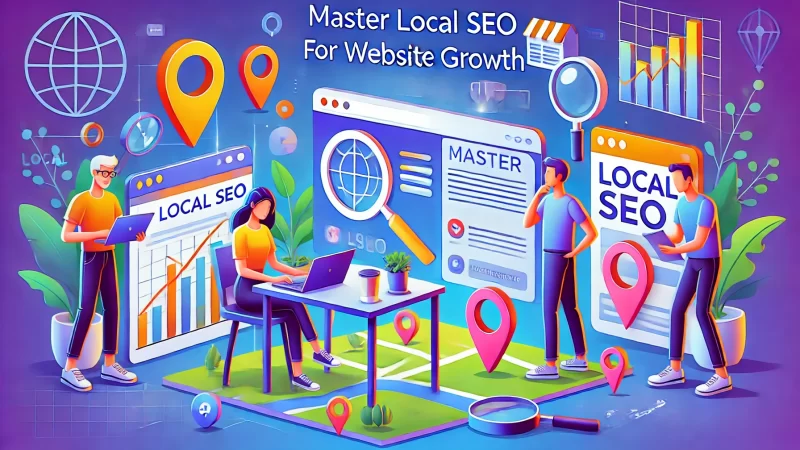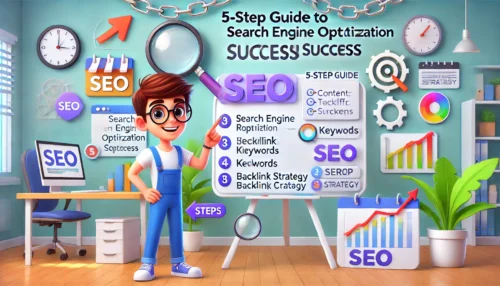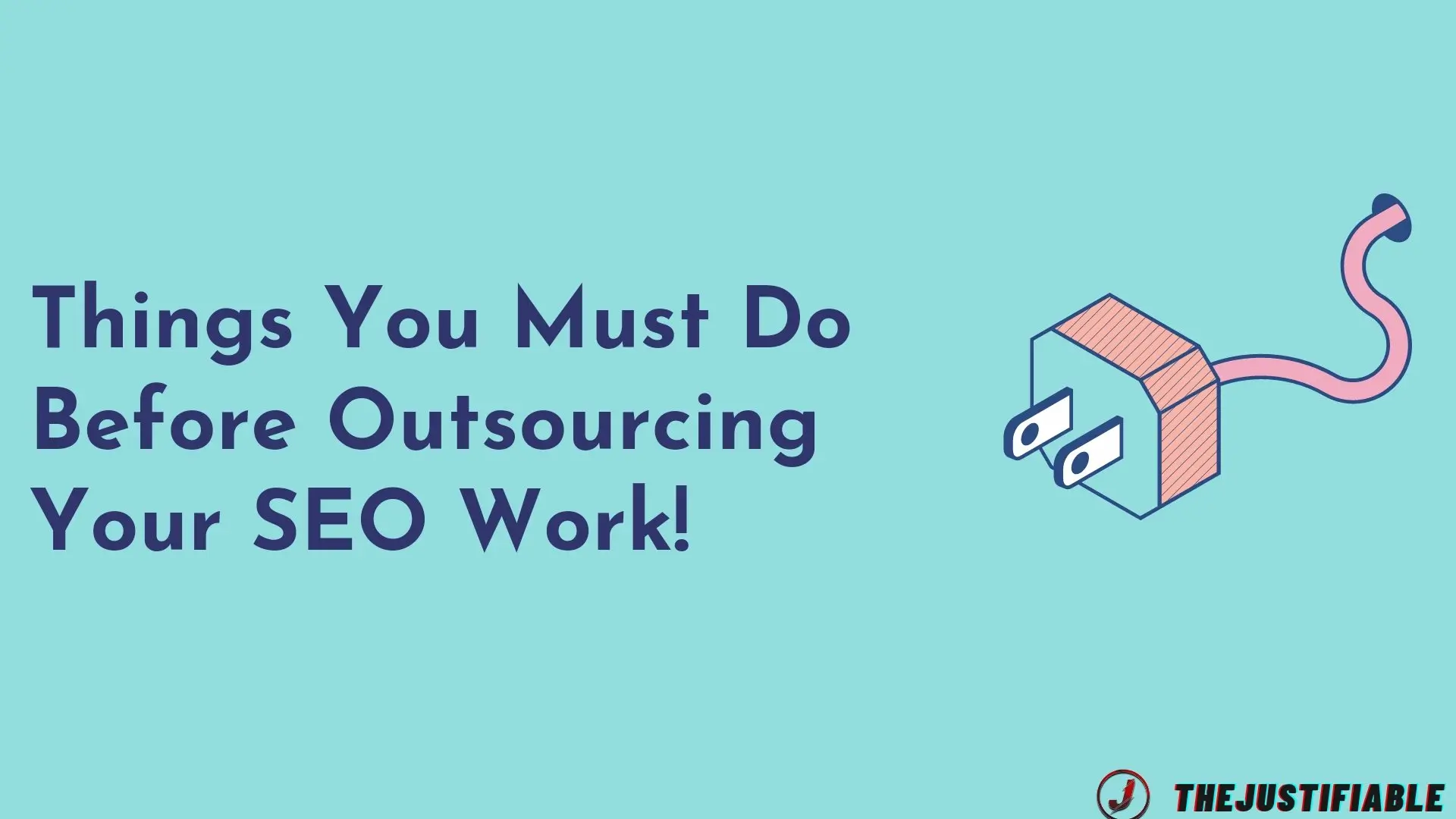Table of Contents
Are you wondering how to add SEO to website for instant growth and better search engine visibility?
This comprehensive guide provides step-by-step instructions and actionable strategies to enhance your site’s SEO, attract organic traffic, and achieve higher rankings. By the end of this guide, you’ll have a clear understanding of optimizing your website effectively.
Understand the Basics of SEO for Website Optimization
Search engine optimization (SEO) is the foundation of online visibility. When done effectively, it improves your website’s ranking, attracts relevant traffic, and enhances user engagement. Let’s dive into the essentials of SEO for website growth.
What Is SEO and Why Is It Important?
SEO stands for search engine optimization, which involves optimizing your website to rank higher in search engine results. It’s vital because it helps your audience discover your website organically without relying solely on paid advertising. I recommend prioritizing SEO to build sustainable traffic.
SEO plays a pivotal role in how people find your content. It aligns your website with search engine algorithms, ensuring your site provides value. Whether you’re selling a product or sharing information, SEO makes your efforts visible.
Imagine searching for a solution and landing on a poorly ranked page. You’d likely miss valuable insights. That’s why I believe incorporating SEO gives your audience better access to what you offer, fostering trust and authority in your niche.
How Does SEO Impact Website Growth?
SEO directly influences website growth by driving organic traffic. When people find your site through relevant searches, they’re more likely to engage, subscribe, or make purchases. I suggest making SEO a priority for long-term growth.
Think about it: a higher ranking means increased visibility. This visibility attracts users actively searching for your content or products. By optimizing your site for keywords, you’re essentially matching solutions to their problems, creating value and loyalty.
Another reason SEO is transformative is its ability to enhance your website’s credibility. Users often trust search engines, and being on the first page acts as a recommendation. Leveraging this trust is essential for scaling your business.
Key Benefits of Adding SEO to Website
Adding SEO to your website comes with multiple benefits, such as improved visibility, higher engagement, and better ROI. I advise focusing on SEO because it amplifies your online presence without escalating costs.
One significant benefit is that SEO builds authority. Search engines prioritize websites that follow best practices, rewarding them with better rankings. This positions your site as a trusted resource in your industry.
Another key advantage is the potential for sustained traffic. While ads bring short-term attention, SEO ensures consistent growth. I suggest combining SEO with quality content to achieve enduring results.
How Search Engines Rank Websites
Search engines rank websites using algorithms that analyze relevance, quality, and user experience. Understanding these factors is crucial if you want to optimize effectively. I recommend focusing on creating a site that’s both user-friendly and content-rich.
Key elements that influence rankings include keywords, backlinks, and page speed. Search engines prioritize sites that answer user queries efficiently and provide meaningful content. Incorporating these elements can improve your rankings.
Additionally, search engines value mobile-friendliness and security. They want users to have the best experience, no matter the device. I suggest regularly updating your site to meet evolving standards and stay competitive.
Conduct Effective Keyword Research for SEO Website

Keyword research is the cornerstone of successful SEO. Identifying the right terms helps your audience find you while boosting your website’s visibility. Let’s explore the strategies to master keyword research.
Tools to Find High-Value Keywords
Several tools, such as Google Keyword Planner and SEMrush, help identify high-value keywords. These tools reveal search volume, competition, and trends. I suggest starting with free tools and scaling up as you refine your strategy.
Using these tools, focus on keywords that align with your audience’s search intent. This ensures you’re targeting phrases that bring relevant traffic. A mix of high-traffic and low-competition keywords often yields the best results.
It’s also important to analyze competitors. Observing what works for them can guide your efforts. I recommend tracking these keywords over time to adapt to changes and maintain your competitive edge.
Steps to Identify Your Target Audience
Your target audience drives the success of your SEO strategy. To identify them, consider their demographics, interests, and online behavior. I believe understanding your audience is key to creating meaningful content that resonates.
Begin by analyzing your current visitors. Tools like Google Analytics reveal insights into their preferences and habits. These details help you tailor your keyword research and content to their needs.
Once you’ve defined your audience, align your keywords with their intent. Whether they’re looking for information or ready to purchase, your content should guide them toward action. This alignment strengthens your SEO efforts.
How to Choose Long-Tail Keywords for Your Website
Long-tail keywords are specific phrases that attract niche audiences. They’re less competitive and often more aligned with user intent. I advise prioritizing these to connect with audiences looking for precise solutions.
For instance, instead of targeting “shoes,” opt for “comfortable running shoes for women.” This approach narrows your audience but increases conversions. I recommend experimenting with several long-tail keywords to identify what works best.
Another advantage of long-tail keywords is their role in voice search optimization. Many users phrase searches conversationally, and long-tail keywords cater to this trend. Incorporating these terms enhances your website’s visibility across search methods.
Incorporating Keywords Strategically
Incorporating keywords strategically means placing them where they matter most. Use them in headings, meta descriptions, and the first 100 words of your content. I believe balancing keyword placement with natural readability is crucial.
Avoid overstuffing keywords, as this harms both SEO and user experience. Instead, focus on creating meaningful content that naturally includes these terms. I suggest using related phrases to add variety and improve context.
Another tip is to leverage keywords in image alt text and URLs. These elements often go unnoticed but play a role in SEO. By optimizing all aspects of your content, you can achieve a more comprehensive strategy.
Optimize Website Content for Better SEO
Optimizing your website content for SEO ensures it reaches the right audience and ranks well on search engines. I suggest focusing on creating engaging, keyword-rich, and user-friendly content that keeps your audience coming back for more.
Writing Engaging Titles and Meta Descriptions
Crafting engaging titles and meta descriptions is essential for attracting clicks. Titles should include your primary keyword, like how to add SEO to website, while being clear and compelling. I recommend keeping them concise and impactful.
Meta descriptions act as a preview for your content. Use them to highlight your value while naturally integrating keywords. Imagine a user scanning search results—your meta description should convince them your content solves their problem.
Avoid vague or generic phrases. Instead, use action-driven language to create urgency or curiosity. For example, “Discover how to add SEO to website effectively and skyrocket your traffic today!” This approach improves click-through rates.
Structuring Content for Readability and SEO
Organizing content into clear sections with headings ensures readability. Readers (and search engines) prefer structured information. I suggest breaking content into bite-sized paragraphs and bullet points for easy navigation.
Use subheadings to highlight key points, making it easier for users to skim and find value. Always include keywords naturally within these subheadings. Remember, a well-organized page keeps readers engaged longer, improving SEO metrics.
Visual elements like images or charts also enhance readability. Ensure these visuals are relevant and optimized with alt text containing keywords. This small step can significantly boost your content’s accessibility and ranking.
Using the Focus Keyword: How to Add SEO to Website
The keyword how to add SEO to website should be seamlessly woven throughout your content. I believe placing it in the introduction, headings, and conclusion ensures search engines recognize its importance.
Avoid stuffing the keyword; instead, use it where it adds context. For example, in describing steps, you could say, “Learning how to add SEO to website is essential for increasing traffic and visibility.” This keeps the flow natural.
Contextual variations of the keyword can enrich your content. Use phrases like “implement SEO strategies” or “optimize your site for SEO” to provide variety while reinforcing your focus.
Internal and External Linking Best Practices
Internal and external links are vital for SEO and user experience. Internal links guide visitors to related pages on your site, improving navigation. I advise linking to your cornerstone content to increase its authority.
External links, when used strategically, connect readers to credible sources. For example, linking to research or tools enhances your content’s value. Ensure these links open in new tabs to maintain visitor retention.
Anchor text matters. Use descriptive phrases like “Learn how to add SEO to website effectively” instead of generic terms like “click here.” This approach signals relevance to both users and search engines.
Improve Technical SEO for Website Performance

Technical SEO ensures your website runs smoothly and meets search engine requirements. I suggest addressing these foundational elements to improve rankings and user satisfaction.
Enhancing Website Speed and Load Time
Website speed is crucial for user experience and SEO rankings. Visitors are likely to leave if a site loads slowly. I recommend compressing images, using caching plugins, and optimizing code for faster performance.
Evaluate your site’s speed using tools like Google PageSpeed Insights. These tools pinpoint issues and offer actionable suggestions. Addressing these issues not only improves SEO but also reduces bounce rates.
Regularly monitor speed as content changes can affect performance. If possible, invest in a quality hosting provider to ensure consistent load times, especially during traffic spikes.
Mobile-Friendly Website Optimization Tips
With mobile usage on the rise, a mobile-friendly website is non-negotiable. I suggest using responsive design to ensure your site adapts to various screen sizes seamlessly.
Test your site’s mobile performance using tools like Mobile-Friendly Test. Look for issues like tiny fonts, unclickable buttons, or awkward layouts. Fixing these issues enhances user experience and SEO.
Navigation matters. Simplify menus and avoid pop-ups that interfere with usability on smaller screens. A well-optimized mobile site shows users you care about their experience, which search engines reward.
How to Fix Common Technical SEO Errors
Technical errors like broken links or missing meta tags can hurt your SEO. I recommend performing regular audits using tools like Screaming Frog or Serpstat to catch and resolve these issues early.
Check for duplicate content, as it confuses search engines. I suggest consolidating duplicate pages or using canonical tags to signal the preferred version. Addressing these problems strengthens your site’s SEO health.
XML sitemaps and robots.txt files also play a role. Ensure these are updated to guide search engines efficiently. I believe fixing these technical aspects is like fine-tuning a machine—it keeps everything running smoothly.
Importance of Secure HTTPS Protocol
Security is a ranking factor, and HTTPS signals a secure connection. If your site still uses HTTP, I strongly advise upgrading to HTTPS immediately. It protects data and builds trust with visitors.
Switching to HTTPS requires an SSL certificate, which many hosting providers offer for free. Once installed, update your links to reflect the change. This move reassures users their information is safe on your site.
A secure website not only boosts rankings but also enhances credibility. I believe visitors are more likely to engage with a site they perceive as trustworthy, making HTTPS a must-have.
Create an Effective On-Page SEO Strategy
On-page SEO involves optimizing individual pages to rank higher. I recommend focusing on every detail, from headers to CTAs, to maximize your content’s impact.
How to Optimize Headers and Subheaders for SEO
Headers and subheaders structure your content and improve readability. Use your primary keyword, how to add SEO to website, in key headers. I suggest writing concise, descriptive headings to guide readers through your content.
Strategically numbering or categorizing subheaders can make your content more scannable. For instance, “5 Steps to Add SEO to Your Website” provides clarity while engaging the reader. Each subheader should deliver unique, valuable insights.
Avoid overloading headers with keywords. Instead, focus on creating contextually relevant titles that align with user intent. This balance keeps your content natural and reader-friendly.
Adding Alt Text to Images for SEO Benefits
Alt text describes images for search engines and users with visual impairments. I recommend using alt text to include relevant keywords while accurately describing the image’s content.
For example, instead of “image of a website,” write, “Optimized website demonstrating how to add SEO to website effectively.” This approach boosts accessibility and improves your page’s SEO ranking.
Ensure every image on your site has alt text, as missing descriptions are a common oversight. Tools like SEMrush can help identify and resolve these gaps efficiently.
Using Schema Markup to Enhance Search Visibility
Schema markup adds context to your content, helping search engines understand it better. I advise using tools like Google’s Structured Data Markup Helper to implement schema for reviews, FAQs, or product details.
Rich snippets, powered by schema, make your content stand out in search results. For instance, a guide on how to add SEO to website could feature FAQs in the search listing. These snippets drive more clicks.
Schema also works for local SEO, helping businesses appear in map packs or knowledge panels. I suggest experimenting with different types to see what boosts visibility most for your content.
How to Use CTAs to Increase Engagement
CTAs (calls to action) guide readers toward desired actions. I recommend placing CTAs strategically, like at the end of sections or within relevant content. Use clear, persuasive language to encourage engagement.
Examples include “Learn how to add SEO to website today” or “Download our free SEO checklist.” These CTAs resonate more than generic phrases like “Click here,” as they align with the reader’s goals.
Monitor CTA performance to see what works. I believe testing placement, wording, and design can significantly improve conversions, making CTAs a powerful tool in your SEO strategy.
Build a Strong Off-Page SEO Strategy

Off-page SEO focuses on building your website’s credibility and authority through external efforts. I suggest prioritizing this strategy to create a solid reputation and improve your site’s search rankings effectively.
Importance of Backlinks in SEO Website Strategy
Backlinks are essential for building authority in SEO. They act as endorsements from other sites, signaling to search engines that your content is valuable. I recommend focusing on earning quality backlinks instead of quantity.
When reputable websites link to yours, search engines trust your content more. For example, a link from an industry leader boosts your credibility significantly. This trust translates into higher rankings and more traffic.
Internal linking is also important. While backlinks focus on external connections, linking to your own pages reinforces site structure and encourages users to explore more of your content.
How to Earn High-Quality Backlinks Naturally
Earning backlinks naturally requires valuable content others want to reference. I advise creating resources like in-depth guides, original research, or infographics. These assets encourage others to link to your site.
Networking is another effective strategy. Reach out to bloggers or businesses in your niche and offer guest posts. This allows you to share expertise while earning backlinks. Always provide genuine value in these collaborations.
Focus on relationships over transactions. Instead of purchasing links, build partnerships that last. Over time, I believe this approach will create a network of high-quality, organic backlinks.
Leveraging Social Media for Website SEO
Social media is a powerful tool for amplifying your website’s content. Sharing posts on platforms like Twitter or LinkedIn helps your audience discover your resources, which can lead to backlink opportunities. I recommend consistent, engaging social sharing.
To boost visibility, interact with your audience by responding to comments and joining conversations. This personal engagement builds trust and positions your content as shareable and link-worthy.
Social media is also a great way to connect with influencers. When they share your content, it can attract more backlinks and traffic. I suggest maintaining active profiles to expand your reach.
Avoiding Spammy Backlink Practices
Not all backlinks are beneficial. Spammy or irrelevant links harm your SEO efforts. I strongly recommend avoiding link farms or services that promise thousands of backlinks for a low cost.
Instead, monitor your backlink profile regularly using tools like Ahrefs or SEMrush. If you spot harmful links, disavow them through Google Search Console to protect your rankings.
Focus on quality over quantity. A few links from authoritative sites have a greater impact than numerous links from low-quality sources. I advise staying ethical and strategic in your backlink-building efforts.
Track and Monitor SEO Progress
Tracking and monitoring your SEO progress ensures your strategies are working. I suggest using tools and analytics to refine your approach and stay ahead in the competitive SEO landscape.
Essential Tools to Monitor SEO Website Performance
Tools like Kissmetrics and Ahrefs are invaluable for tracking SEO performance. They provide data on traffic, rankings, and user behavior. I recommend starting with these tools to get a clear picture of your website’s progress.
For beginners, Google Search Console is an excellent starting point. It highlights issues like broken links or indexing problems, helping you fix them promptly. Over time, incorporating advanced tools will refine your strategy further.
Regular audits with these tools keep your site optimized. I believe scheduling monthly reviews ensures you’re always improving and responding to changes in search algorithms.
How to Interpret Key SEO Metrics
Metrics like organic traffic, bounce rate, and click-through rate (CTR) reveal your website’s performance. I suggest focusing on organic traffic first, as it directly reflects your SEO efforts.
Bounce rate shows how engaging your site is. A high bounce rate signals room for improvement, such as better content or faster loading times. I advise taking user feedback seriously to lower this metric.
CTR measures how many users click on your site from search results. I believe optimizing meta descriptions and titles with engaging keywords can significantly boost this number.
Steps to Refine Your SEO Strategy Over Time
SEO is an ongoing process. Regularly analyzing performance helps you identify what works and what doesn’t. I suggest revisiting your strategy every few months to ensure continuous improvement.
When refining your approach, prioritize user experience. If metrics suggest issues, address them with fresh content, faster speeds, or better mobile optimization. Staying proactive keeps you ahead of competitors.
I also recommend experimenting with new keywords or content types. For instance, if blog posts perform well, consider adding videos or infographics to expand your reach and engagement.
Using Analytics to Enhance SEO Website Growth
Analytics tools uncover patterns that can guide your growth strategy. For example, if a specific page drives most traffic, focus on creating similar content. I believe leveraging these insights makes your strategy more effective.
Track user journeys to understand what keeps visitors engaged. Identifying popular content and high-traffic pages allows you to replicate success elsewhere on your site, boosting overall performance.
Analytics also reveal gaps in your strategy. For instance, a drop in traffic may signal keyword trends changing. Responding to these insights promptly ensures your site remains competitive and relevant.
Master Local SEO for Website Growth

Local SEO connects your business with nearby audiences. I suggest focusing on this strategy if you want to attract customers from your community and dominate local search results.
How to Optimize for Local Search Results
Optimizing for local search involves targeting location-specific keywords and creating content relevant to your area. I recommend using phrases like “best bakery in Chicago” to attract users searching for nearby services.
Claiming your Google My Business profile boosts visibility in local searches. Add accurate information about your location, hours, and services. This step alone can drive more foot traffic and online engagement.
Consistency matters. Ensure your business details are the same across all platforms, including directories and social media. This uniformity builds trust with both users and search engines.
Adding Your Business to Google My Business
Google My Business (GMB) is a powerful tool for local SEO. It displays your business on Google Maps and search results. I suggest filling out your profile completely, including photos and service descriptions.
Encourage customers to leave reviews on your GMB profile. Positive reviews improve rankings and attract more visitors. I believe responding to reviews—positive or negative—shows you value customer feedback.
Update your GMB profile regularly. For example, if your hours change, reflect it promptly. Keeping this information accurate helps customers trust your business and boosts SEO performance.
Tips to Gain Positive Customer Reviews for SEO
Customer reviews play a significant role in local SEO. I recommend creating a simple process for happy customers to leave feedback, such as providing a direct link to your review page.
Show appreciation for reviewers. A thank-you email or a reply to their comments builds goodwill. This personal touch encourages more feedback and strengthens relationships with your audience.
Avoid fake reviews. Search engines penalize businesses that use unethical practices. Genuine feedback from real customers is far more valuable and improves your reputation over time.
Using Location-Based Keywords Effectively
Location-based keywords target nearby users effectively. I suggest researching terms specific to your area, like “SEO services in Austin,” to capture the interest of local audiences.
Incorporate these keywords naturally into your content, such as blog posts, headers, and meta descriptions. This strategy ensures your site ranks for local searches while maintaining readability.
Pair location keywords with broader terms. For instance, “how to add SEO to website in New York” combines the focus keyword with a location, increasing your chances of appearing in relevant local results.






